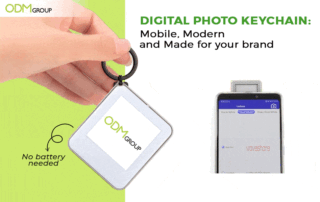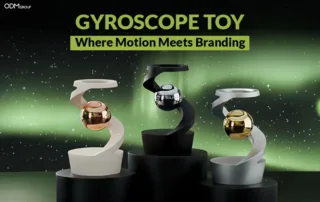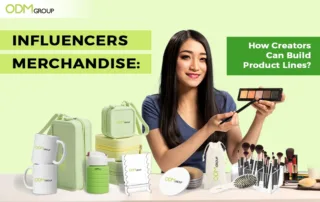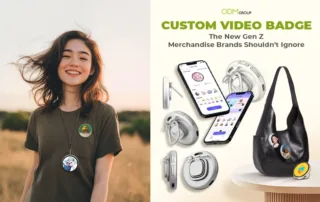“Buy your favorite CARLSBERG BEER MULTIPACK and enter the draw for COLLECTIBLE LIVERPOOL FC GIFTS!”
If you’ve come across this campaign, you’ve seen one of the most iconic examples of partnership marketing strategy in sports: the enduring collaboration between Liverpool FC and Carlsberg.
This collaboration isn’t just about beer and football. It’s about loyalty, legacy, and the shared passion between two powerful brands that have grown stronger together over three decades. The partnership once again takes center stage with exclusive promotions and limited-edition collectible gifts, a perfect case study for how brands can win through partnership marketing.
In this article, we’ll unpack what makes this collaboration timeless, what partnership marketing really means, why it works, and how your brand can build similar alliances that drive visibility, engagement, and sales.
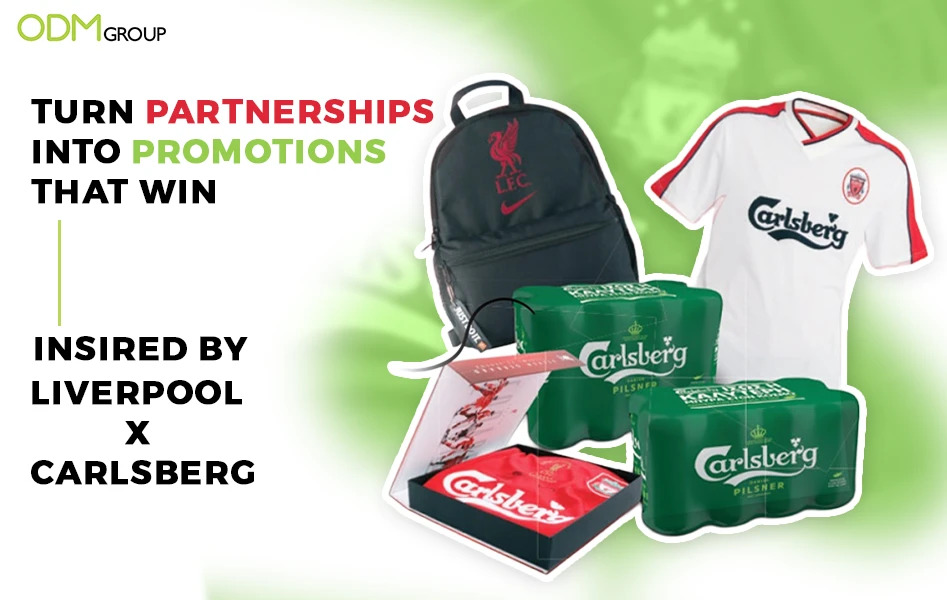
What Is Partnership Marketing?
Partnership marketing is when two or more brands collaborate to reach a common goal, such as expanding their audience, increasing awareness, or driving product sales. It’s a mutually beneficial alliance where both sides bring something valuable to the table: one might offer brand credibility and visibility, the other a strong consumer base or product innovation.
In simple terms, partnership marketing means “winning together.”
Unlike sponsorships, where one party pays for exposure, partnership marketing is a strategic and collaborative approach. It involves joint campaigns, shared assets, co-branded products, and aligned storytelling that resonates with both audiences.
Some examples include:
-
A beverage company is partnering with a sports club to offer exclusive merchandise.
-
A beauty brand partnering with a film franchise for themed packaging.
-
A tech company collaborating with a fashion brand for limited-edition accessories.
Each partnership merges fan bases, emotions, and values, creating a story bigger than any single brand could tell alone.
The Liverpool FC x Carlsberg Partnership: A Legacy of Trust
The partnership between Liverpool FC and Carlsberg is one of the longest in Premier League history. It began in 1992, marking the start of a powerful alliance that would shape both football and beverage marketing for decades to come.
For over 30 years, Carlsberg has been more than just a logo on Liverpool’s shirt. It’s been a symbol of shared spirit and heritage. Even when the sponsorship ended in 2010, the relationship didn’t fade. Carlsberg remained the Official Beer Partner of Liverpool FC, continuing to engage fans worldwide through creative campaigns, collector’s editions, and exclusive events.
Their partnership has evolved beautifully over time. From special-edition green and red cans featuring the Liverpool crest to limited bottle designs celebrating club milestones, Carlsberg has leveraged the club’s global fan base to strengthen its emotional connection with consumers.
And in 2025, the collaboration continues with a fresh twist:
“Buy your favorite Carlsberg Beer Multipack and enter the draw for Collectible Liverpool FC Gifts!”
This campaign perfectly encapsulates what partnership marketing is all about, aligning passion with purchase.
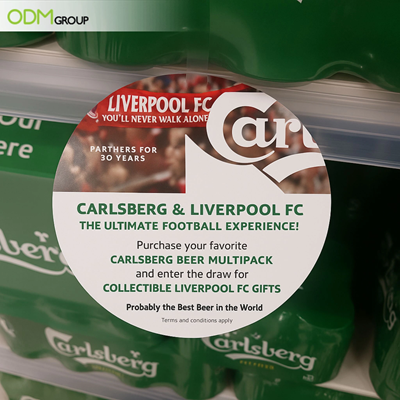
Why Partnership Marketing Works
1. Shared Audience, Extended Reach
Football fans and beer lovers share overlapping interests, like social connection, celebration, and loyalty. By working together, Carlsberg and Liverpool tap into each other’s massive audiences.
This kind of cross-promotion helps both brands reach millions more consumers without doubling their ad spend. It’s a cost-effective way to grow awareness across markets.
2. Emotional Connection Through Shared Values
Liverpool’s mantra, “You’ll Never Walk Alone,” embodies unity and belonging. Carlsberg, with its slogan “Probably the best beer in the world,” mirrors the same confidence and pride.
Their alignment in tone and values builds emotional authenticity, which is vital in an age when customers crave genuine brand relationships.
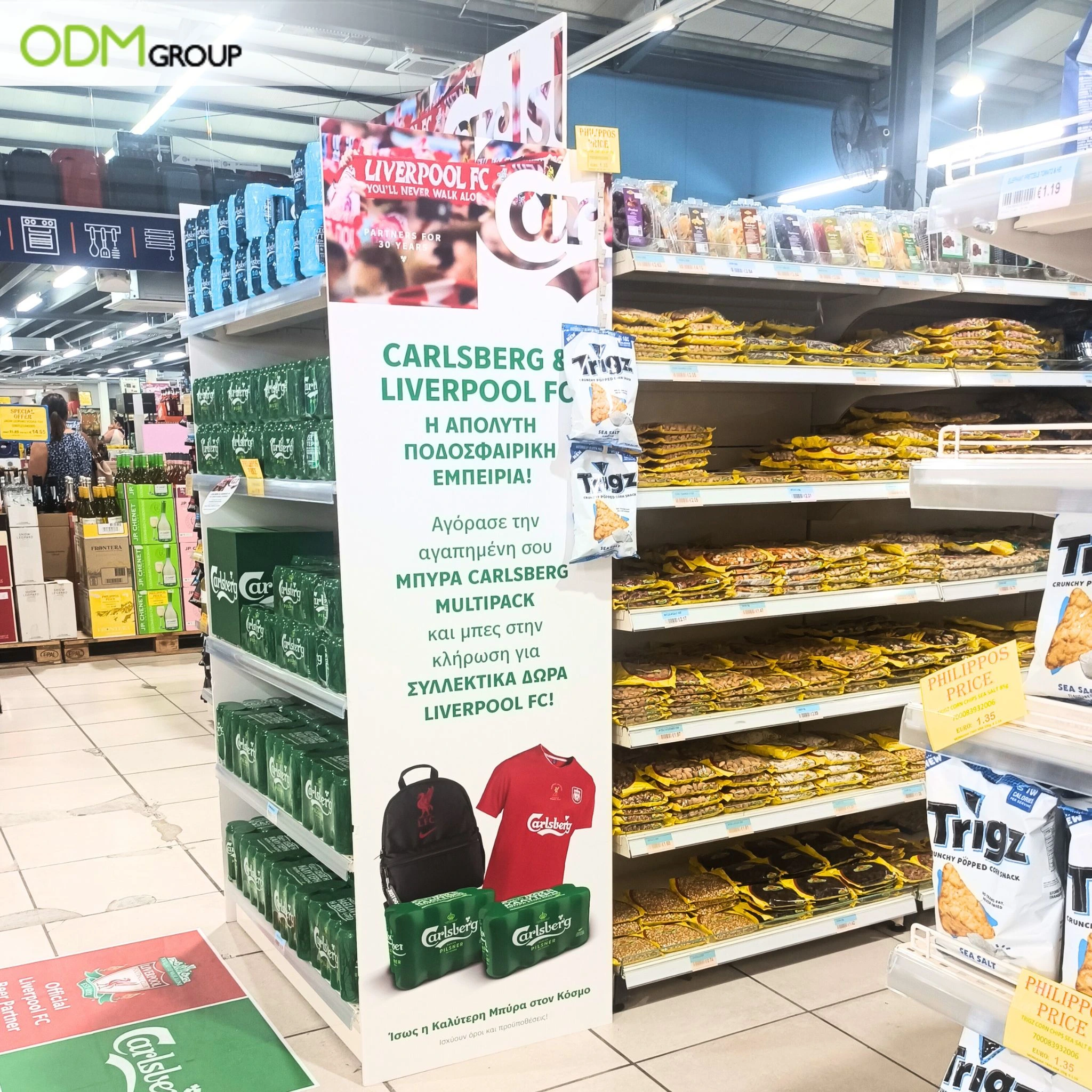
3. Co-Branding Builds Premium Perception
By featuring Liverpool FC’s logo and colors, Carlsberg elevates its packaging into collectible memorabilia.
Fans are willing to pay more, stock up, or even display these products, turning ordinary multipacks into limited-edition experiences.
4. Storytelling That Resonates
Every campaign they launch tells a story: not about the product, but about the feeling of being part of something bigger. From tribute cans celebrating legendary players to giveaways offering exclusive fan gear, their marketing invites customers to live the story, not just buy into it.
5. Tangible ROI and Measurable Engagement
The partnership isn’t just for show. Sales spikes during campaign periods, high engagement on digital platforms, and continuous brand mentions in global sports coverage all demonstrate strong ROI. It’s proof that emotionally charged collaborations translate into measurable results.
Turning Partnership Marketing into Strategy
So how can your brand replicate this success story? Here’s how to design a partnership marketing strategy that creates impact and lasting connections.
1. Identify the Right Partner
Your ideal partner should share your values and target audience, but not necessarily your product category.
For example:
-
A sustainable coffee brand could partner with an outdoor gear company.
-
A cosmetics label might collaborate with a film studio for a themed release.
-
A tech startup could co-launch a campaign with a lifestyle influencer network.
When brands complement, rather than compete, the partnership feels organic and mutually beneficial.
Ask yourself:
-
Does this partner share our vision and brand tone?
-
Will our audience find this partnership credible?
-
What unique value can we offer each other?
2. Align Objectives
Before signing any deal, both parties should clearly define what success looks like.
Is it brand awareness, sales growth, or customer engagement? Liverpool and Carlsberg, for example, aim for both emotional and commercial wins. They strengthen fan loyalty while boosting beer sales during match seasons.
Set SMART goals:
-
Specific: e.g., increase sales by 15% during the campaign period
-
Measurable: track engagement metrics and conversions
-
Achievable: ensure marketing budgets align
-
Relevant: tie into broader business objectives
-
Time-bound: define clear campaign timelines
3. Create a Unified Message
The heart of any partnership is a shared narrative. The messaging should blend both brand identities naturally, just like Carlsberg and Liverpool’s campaigns that merge sport and celebration.
For instance:
-
Tagline: “Celebrate Every Goal — With Carlsberg and Liverpool.”
-
Visuals: Use both brand colors and imagery in a balanced way.
-
Tone: Keep consistent language across all platforms — from social media to packaging.
4. Co-Develop the Experience
Partnership marketing isn’t just about co-branding; it’s about co-creating experiences.
Carlsberg’s collectible campaigns demonstrate this perfectly. Each limited bottle or multipack becomes an interactive experience.
Ways to do this include:
-
Co-branded packaging or limited merchandise.
-
Interactive contests or sweepstakes.
-
Collaborative content like videos or podcasts.
-
Event sponsorships, fan meetups, or pop-up displays.
ODM often helps clients design and produce the collectible items that make these collaborations tangible, from display units and POSM to limited-edition branded gifts.
5. Choose the Right Promotional Tools
A successful partnership campaign often relies on physical and digital touchpoints that work together. Promotional products, packaging, and display solutions make the campaign visible in—store, while online content fuels awareness.
For example:
-
POS displays showcasing co-branded packaging at retail points.
-
On-pack gifts like collectible coins, bottle openers, or fan scarves.
-
QR codes linking to digital contests or exclusive video content.
-
Limited-edition merchandise redeemable through purchases.
This blend of online and offline engagement drives both immediate sales and long-term brand affinity.
Read More: Carlsberg Promotion for the Past Years
The Role of Promotional Products in Partnership Marketing
Promotional products are one of the most effective tools for bringing partnership campaigns to life. They turn a collaboration from a simple announcement into a physical, memorable experience that customers can keep, use, display, or collect. When done well, these items reinforce the shared message of the partnership and extend the campaign’s reach far beyond digital advertising.
In any partnership marketing strategy, merchandise becomes a bridge between both brands. It gives the audience something tangible that represents the collaboration — whether it’s a collectible item, a limited-edition product, or an exclusive gift redeemed through purchase.
Promotional products can take many forms, such as:
-
Co-branded packaging that elevates everyday items into campaign-specific editions
-
Limited merchandise like apparel, accessories, or themed gift sets
-
Functional tools such as drinkware, tech accessories, or lifestyle items tailored to the theme of the partnership
-
Activation materials, including in-store POS displays, standees, and event giveaways
-
Collectors’ items such as badges, coins, figurines, or commemorative sets
These items play a critical role because they make the partnership visible in the real world. Customers don’t just see the campaign—they interact with it, share it, and integrate it into their daily lives. A co-branded mug on a desk, a special-edition box on a shelf, or a limited-release product on social media turns the campaign into an ongoing brand presence.
For brands, this means higher recall, stronger engagement, and a deeper emotional anchor with their audience. For partners, it creates aligned storytelling across multiple touchpoints — retail, events, digital spaces, and in-home use.
At ODM Group, we support partnership marketing by designing and producing high-quality promotional products tailored to the collaboration’s goals. From ideation and prototyping to manufacturing and global distribution, our team ensures each item reflects both brands’ visual identity, message, and purpose. Whether you’re launching a cross-industry collaboration, celebrating a milestone, or driving a major seasonal campaign, we help transform your partnership into a meaningful physical experience.
Discover how global brands use partnership marketing to amplify reach, strengthen loyalty, and create memorable customer experiences.
The collaboration of the two popular brands obviously brings a refreshing look and taste to the market. Moreover, their brandings reflect smoothly in this awesome Free Standing Display Unit (FSDU)!
McDonald’s Philippines, in partnership with Coca-Cola, has launched a dazzling aluminium cup collection just in time for the holiday festivities! These custom reusable cups are available in McDonald’s stores nationwide.
Heineken, as the official sponsor of the UEFA Champions League, excites football fans and drink lovers with its latest gift with purchase offer.
Conclusion
A strong partnership marketing strategy does more than combine two logos. It builds a shared story that resonates with audiences and delivers real commercial value. The most effective collaborations create emotional impact, drive engagement, and turn campaigns into experiences people want to be part of.
Promotional products and co-branded merchandise play a key role in making these partnerships tangible. When customers can see, use, and collect items tied to a collaboration, the campaign lives far beyond its launch period.
ODM Group supports brands in bringing these ideas to life. Our team handles the design, development, and production of custom promotional products, themed packaging, and retail displays that elevate partnership campaigns.
If you’re planning a collaboration or exploring ways to strengthen your next campaign, feel free to contact our team. We’d be glad to support you from concept through production and help turn your partnership strategy into something memorable.
More promotional products to choose from
Frequently Asked Questions
What is partnership marketing?
It’s a collaborative strategy where two or more brands join forces to reach shared business goals through co-branded campaigns, cross-promotions, or shared events.
How is partnership marketing different from sponsorship?
Sponsorship is mostly financial support for brand exposure. Partnership marketing is strategic and interactive — both brands actively collaborate and share creative assets.
Can small businesses use partnership marketing?
Absolutely. Local cafes, fitness studios, and even e-commerce brands can collaborate — for example, co-hosting events or sharing customer promotions.
What kinds of products work best in partnership campaigns?
Limited-edition or collectible items — like branded mugs, apparel, or packaging — perform best because they give customers something tangible to remember.
How can ODM help with partnership marketing?
ODM designs and produces custom promotional products, packaging, and retail displays that enhance co-branding campaigns. From concept to shipment, we help brands execute impactful collaborations globally.






